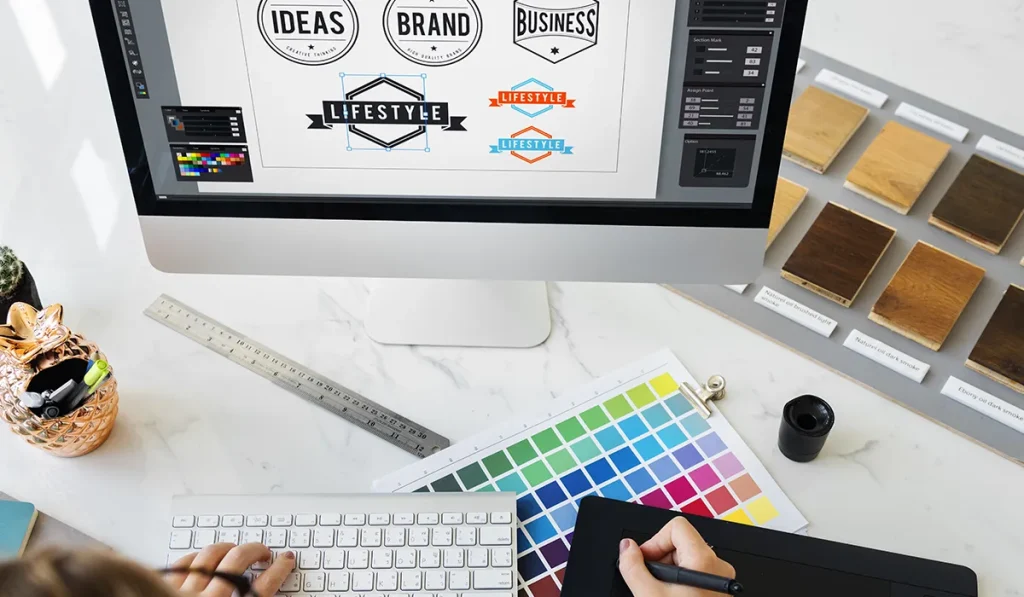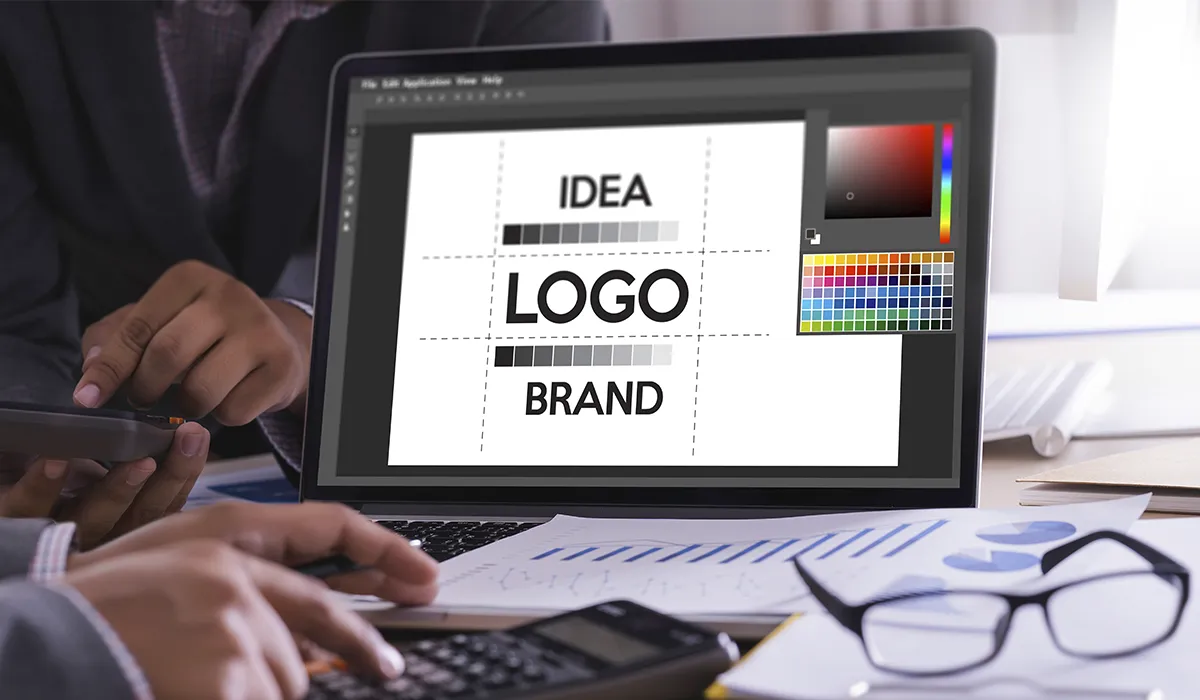How to Choose the Right Colors for Your Brand and Logo: A Step-by-Step Guide
Brand and Logo colors are the most important decisions in building a strong brand identity. Colors aren’t just visually appealing; they communicate emotions, values and even the personality of your business. Whether a new business logo design or refreshing an existing branding strategy, understanding the role of color will help you make informed decisions in that regard.
In this guide, step by step, we’ll explore how to choose the right colors for your Brand and Logo, ensuring your business stands out and makes a lasting impression.
The Importance of Color in Your Brand and Logo
Color is much more than just color; it greatly affects the way people feel about your company. Digital studies prove that colors can evoke emotions and affect purchase decisions. This makes them one of the most critical elements in branding. Take blue, for example: it’s a color often associated with trust and stability, hence common in so many company logo designs. Red evokes passion and a sense of urgency, making it perfect for dynamic brands.
When working on your branding logo, your choice of colors should align with your business values and target audience. Whether you’re hiring professional logo designers in Dubai or using a logo maker online, the color scheme is the backbone of effective branding and brand management.
Step-by-Step Guide to Choosing the Right Colors for Your Brand and Logo
Step 1: Define Your Brand Identity
Before you go into colors, step back and consider your brand’s personality. Is it modern and innovative, or more traditional and reliable? Who is your target audience? What emotions are you trying to convey with your Brand and Logo?
For example, a luxury logo can have black and gold to convey elegance, while the playful branding logo can make use of bright and cheerful colors. By defining your identity, you had therefore laid the foundation for meaningful color choices.
Step 2: Understand Color Psychology
Each color carries its meaning. Here’s an at-a-glance reference guide to popular colors used in logo design:
• Red: Energy, passion, excitement. Great for companies that want to stick out.
• Blue: Trust, dependability, calmness. It’s very prevalent in business logos.
• Green: Growth, health, eco-friendliness. It’s usually used when it comes to sustainable branding.
• Yellow: Optimism, warmth and creativity. For a business that wants to evoke a cheerful mood, it’s perfect.
• Black and White: Timeless, sophisticated and minimum. It is ideal for creative logo designs or when targeting luxury brands.
The knowledge of how colors align with emotions will help you pick the correct hues for your Brand and Logo.
Step 3: Choose a Primary Color
The primary color of your brand and logo should depict an intrinsic message. For example, if it’s a healthcare business logo, then blue or green could do the magic to establish your trustworthiness, or a brand in the food industry might use red to stimulate appetite. For a vibrant creative logo, orange or pink would sound a better fit.
With one main color identified, you can develop a supporting palette of accent and background colors.
Step 4: Complementary Color Palette
Color schemes that are harmonious depend on your main or primary color combined with complementary or analogous colors. Color wheels and online color combination generators will help in visualizing a combination. When designing logos, remember to keep the color palette simple: two to four colors work best for clarity and versatility.
Step 5: Take Help from Tools for Inspiration
Sometimes, it is hard to image the perfect combination. You can look at logo generators or even graphic design software for this. Websites like Canva, or even Adobe Color, let you play with palettes until you are certain that your colors actually match your brand’s personality. Most branding agencies, and even logo design firms, offer expert services on how to create the ultimate logo design.
Step 6: Test for Versatility
Your brand and logo are going to go on everything from websites to social media to printed materials. See how different colors look on different mediums. A really great logo design should look amazing in full color as well as in monochrome format.

Best Tips to Design the Perfect Brand and Logo
• Keep It Simple: Stick to two or three colors to avoid overwhelming your audience. Simple logos are often the most memorable.
• Focus on Contrast: High contrast ensures readability and impact, especially for logos with text.
• Consider Trends: While timelessness is key, looking at trends in graphic design can help your logo feel fresh and relevant.
• Work with Experts: Where possible, hire a graphic design company or branding strategist. Professionals can bring this vision to reality.
Avoid Common Mistakes
1. Over complicating the Palette: It is undesirable to have a lot of colors because these may create confusion for an audience or make your logo cluttered.
2. Ignoring Contrast: Low contrasting colors reduce the readability of a design, even for a company logo.
3. Disregarding Trends: Where uniqueness is necessary, viewing trends in graphic design will enable you to develop a look both contemporary and aesthetically pleasing.
4. Lack of Professional Assistance: For improving your logo and branding design, associating with firms offering such services may guarantee expertise that enhances their quality.
In conclusion, the colors chosen for a brand and logo are more than design decisions; they represent the identity of the business. Whether one is in the process of building a new business logo design or refining an existing one, he should take time to reflect on what the colors say about his company.
Or, if stuck, try digging through some of the cool online tools and branding companies out there that specialize in creating your brand’s logo. With all the possibilities running the scope from motion graphics to designer graphics, a good, powerful and effective logo design connects with your audience, tells a story and can create an indelible impression. So choose the color of your Brand and let it shine with its logo.
Frequently Asked Questions(FAQs):
Color plays an important role in branding and logo design, as it conveys emotions, values, and personality; makes an instant impression; builds brand recognition; and may affect customer behavior.
Start by understanding your brand identity, your target audience, and the feelings you want to convey. Researching color psychology might help, too, testing the colors with how your brand’s message falls in line. Tools such as makers of logos and branding agencies could help too.
Red: Passionate, full of energy, urgency.
Blue: Trustful, relaxed, professional.
Green: Growth-oriented, health, nature
Yellow: Optimistic, creative.
Black: Elegant and sophisticated.
A logo generally functions really well with two to three colors. The fewest it will be, the more versatile, recognizable, and attractive it will be.
Blue, red, black and green top the list because they are very psychologically powerful and function across many types of industries.
Color psychology is the study of colors and their effects on human behavior and emotions. For example, the color blue creates a sense of trust and stability, which is why most corporate logos feature this color, while yellow emits feelings of happiness and creativity.
Yes, but it is always better to be consistent. A primary palette should be carried out for a logo, and secondary colors can be dispersed throughout marketing materials, websites, and packaging.
The best color combinations depend on your brand identity. Many complementary colors-like blue and orange, or analogous colors-like blue and green-make for a pretty harmonious scenario.
While trends can inspire fresh ideas, prioritize timelessness so you don’t have to redesign over and over again. Trends are useful in case they resonate with your values and your industry.
Avoid copying competitors, but analyze their color choices to differentiate your branding. Selecting unique colors helps your business stand out in a crowded market.


